Last Updated on 17/01/2024
According to legend, the St. Archangel Michael appeared to bishop Ober in a dream and ordered to build a church here. And that was done: in the 8th century a chapel appeared on the rock. However, the Archangel Michael is unlikely to have anything to do with the transformation of the chapel into a fortress, which we see today. The place was strategically and economically profitable, and the abbots were smart enough to use it. But the main merit, of course, belongs to those architects from the 11-16 centuries who managed to unit the man-made and nature so poetically.
Writers and not only they admired Mont-Saint-Michel, called it the eighth wonder of the world. At number one, it entered the UNESCO list.
Lower Normandy Map. Manche attractions
Pink granite coast (Cote de granit rose)
2. Dinan, Cote d’Armor
3. Côte de Goelo
4. Finistere. Crozon, Locronan
5. Finistere. Brest and Thegonnec
Mont Saint Michel How to get
The question of how to get to Mont Saint Michel (MSM) on your own remains one of the most popular, since many do not want to contact a travel company and go by bus from Paris, and besides, you can see other cities on your own along the way.
If it doesn’t work out with an overnight stay, then the easiest way is to combine MSM with Saint Malo.
Direct way
1.Keolis – direct bus from Rennes and Saint Malo. There was still Dol-de-Bretagne before. And the company is clearly interested in these buses: if earlier the schedule of these buses could be found on the Internet with great difficulty, now there is a separate website www.destination-montsaintmichel.com.
Please note that low season buses are round-trip. In high season, they run on a regular basis twice a day.
2.Flixbus. From Paris, Caen and Saint-Malo.
3. Line 8 Normand NOMAD. From Avranches and Granville.
Via Pontorson
In addition to direct buses, you can get to Pontorson station, and from there you can get to the island using navetta or other transport.
Navetta from Pontorson, after being thrown back and forth to various companies, apparently was taken over by the MSM himself. The schedule is downloaded from https://www.bienvenueaumontsaintmichel.com. Please note that it changes regularly. There is usually a semi-season and season version.
1. To Pontorson, there is a train from Rennes or Avranches (Granville and other cities of Normandy, connected by train).
2. Buses from Saint Malo and Fougeres, in the summer as a single route through Pontorson (line 17 a, b – link)
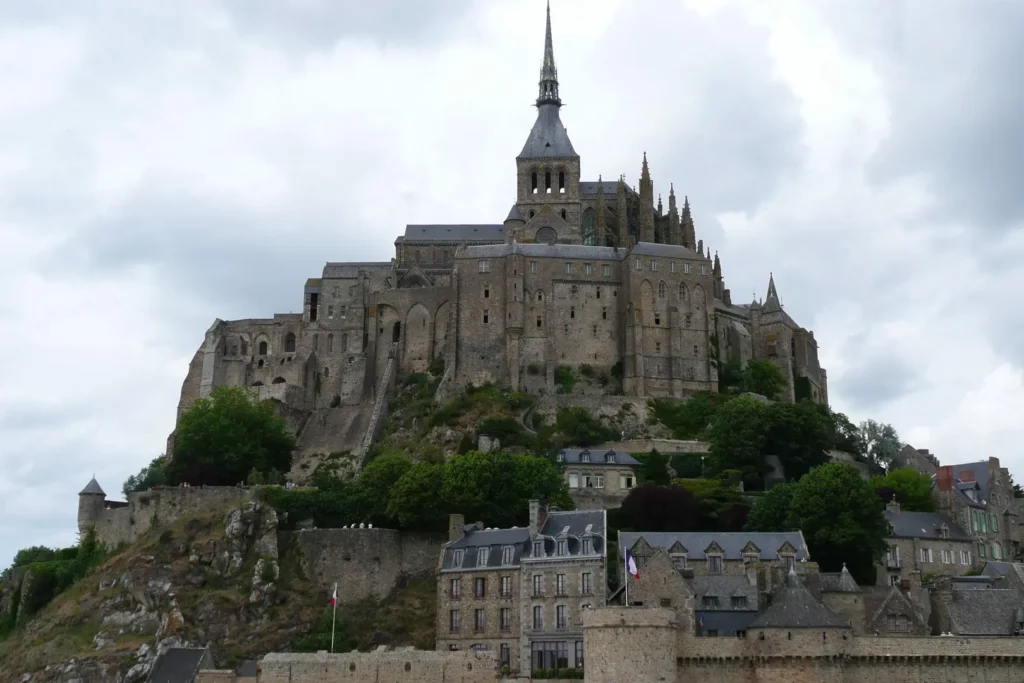
Mont Saint Michel How to visit
In our time, general admiration has served the monument in disservice: three million tourists a year are able to turn any place into a lifeless attraction. In season, you walk along the narrow streets and stairs in the monastery close to other people. From this follows a couple of recommendations for those who want to get pleasure from this place, especially when it comes to summer.
You need to come to MSM with an overnight stay. First, you will avoid the crowds.
Secondly, you are guaranteed to find both ebb and flow – both have their own charm. Get all the best views – sunset, early morning, nighttime lighting. In July and August, in addition, the Mont Saint Michel abbey can be visited late at night with lighting and music.

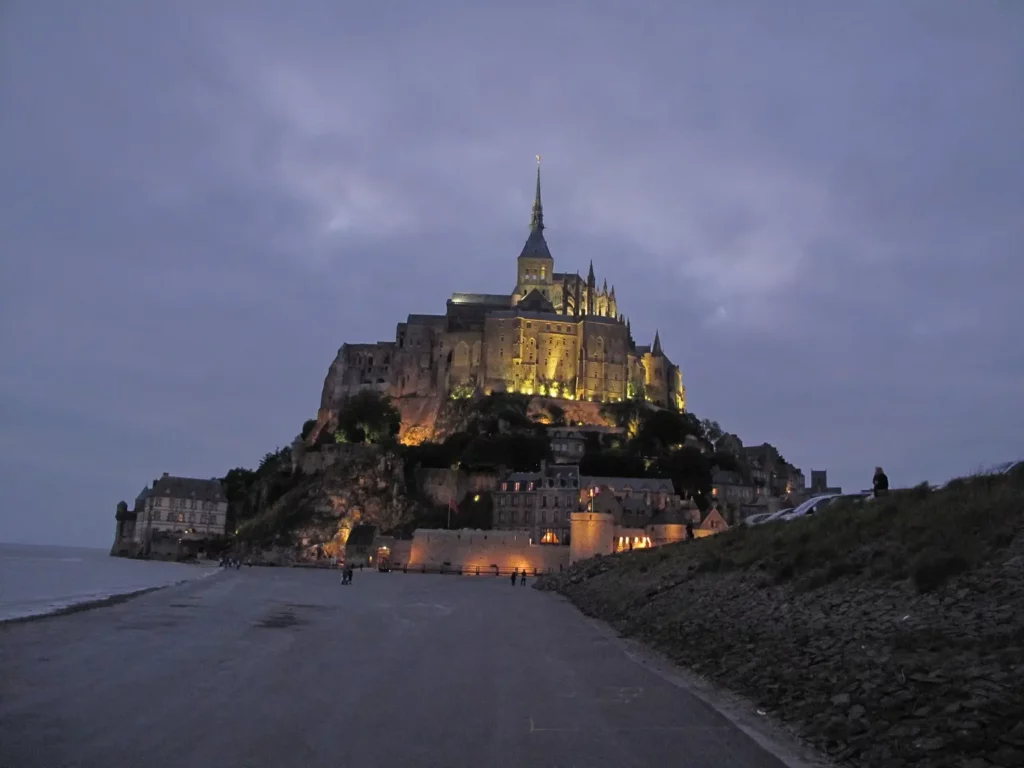
Thirdly, you can easily visit at least one more city: the schedule is designed in such a way that it is more convenient to combine MSM with other cities exactly when you come with an overnight stay. For example, on the day of arrival you can also see Saint Malo, and on the day of departure Fougeres or Vitre.
Attractions near Mont-Saint-Michel:
in Brittany – Ille et Villaine, Saint-Malo, Dinan
from Normandy – Lower Normandy. Map. Manche
If you are traveling with a small child and a stroller, or it is simply difficult for you to move, pay attention: there are long stairs leading up to the mountain, there are also a lot of them in the abbey, there are no lifts, so the mountain is impassable with a stroller. We put the child to play in the sand, and we ourselves took turns.
History
As we have already found out, it all began in the 8th century with the help of the Archangel Michael. In the 10th century. the Normans captured the Cotenten peninsula and the island was on the border with Brittany. The Norman dukes invested in the development of the community on the island, as it was an important strategic point. The first monastic community was expelled from the island by the duke (apparently, they did not understand the strategic goals very well).
In 966, Benedictine monks settled and founded the abbey. First, the church Notre Dame sous Terre was built, it became the crypt of the abbey church in its current form.
In 1066, William the Conqueror asked for support from the monastery in the campaign to England and received financial assistance. In gratitude, the monastery received several possessions in England.
From the 12th century the monastery became an important pilgrimage center, and a settlement arose at its foot. In 1204, during the capture of Normandy by King Philip Augustus of France, the settlement was destroyed, and the monastery was also damaged. The king donated a significant amount in atonement, for which the building “Miracle” was built.
During the Hundred Years War, the abbey withstood the attacks of the British. In 1470, in honor of the defenders of the island, King Louis 11 established the Order of Saint Michael, which for a long time was the highest award in France.
From the middle of the 16th century the monastery gradually fell into decay, during the French Revolution it was turned into a prison, which was until the middle of the 19th century.
In 1874 the island was classified as a historical monument, a dam was built. In 1969 the Benedictine monks returned to the abbey, but left it several years ago.
Now services in the church are conducted by monks of the monastic brotherhood of Jerusalem. Since 1979, the island and the abbey are on the UNESCO list. The dam was recently replaced by a bridge.
Town
Along with the Mont Saint Michel abbey, a settlement on the mountainside also grew. The settlement is one street that rises to the entrance to the monastery.
The first defensive structures already existed in the 11th century. The construction of real fortifications began in 1311, the first bastions were built during the Hundred Years War. The city fortifications made it possible to withstand all the attacks of the British.

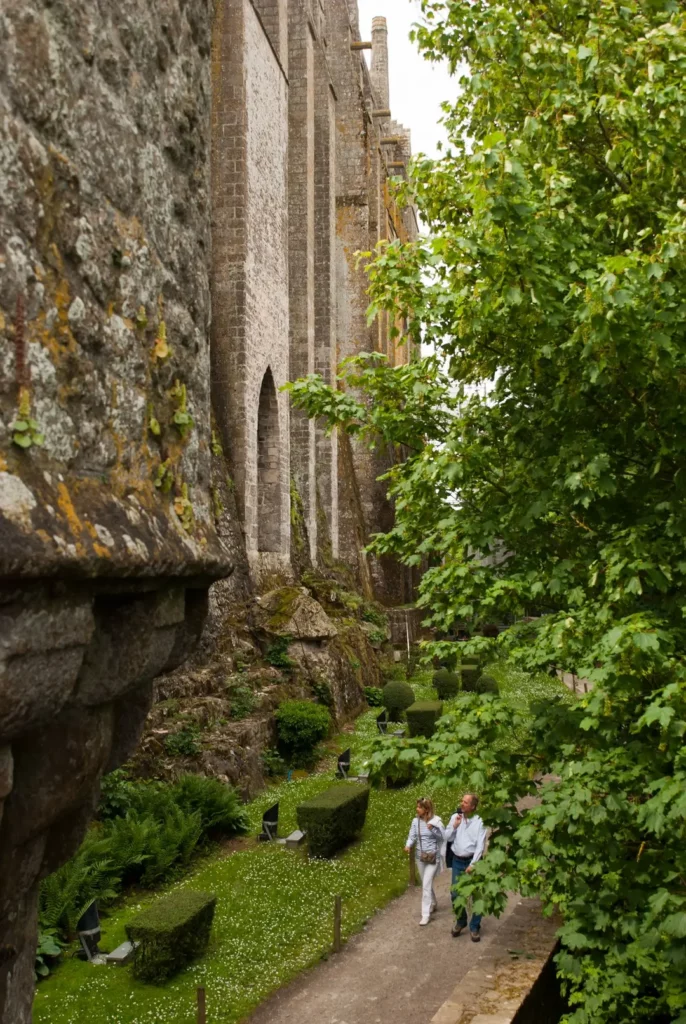

The houses along the street date from the 16th and 18th centuries.
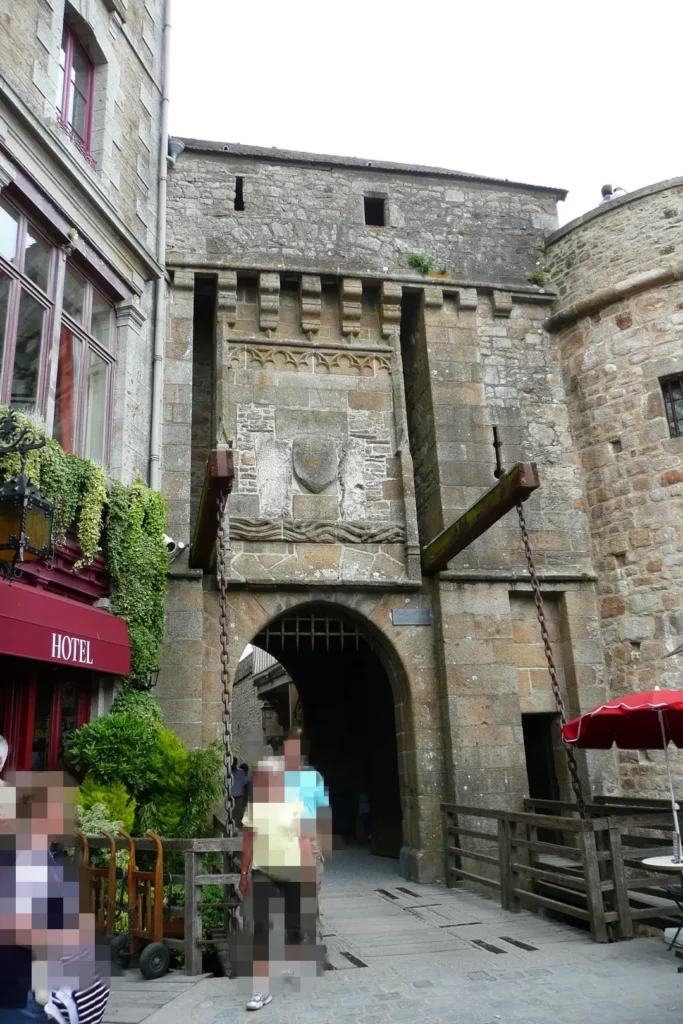

Now everything here is subordinated to tourism – hotels, restaurants, souvenirs. The restaurant and hotel La Mere Poulard is especially famous, where for decent money you can not only eat, but also see how a special dish is cooked on the fire – a large omelet.
In the evening
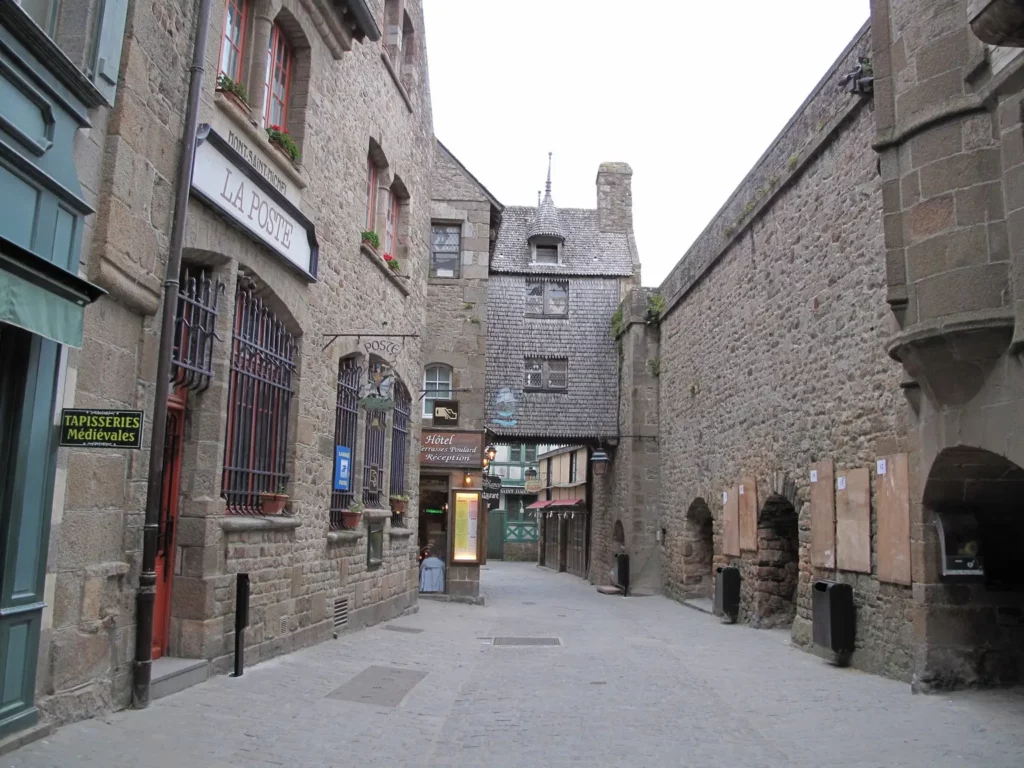
To get rid of the crowds of tourists on the street, walk through the cafe or shop on the walls and climb to the abbey along them.
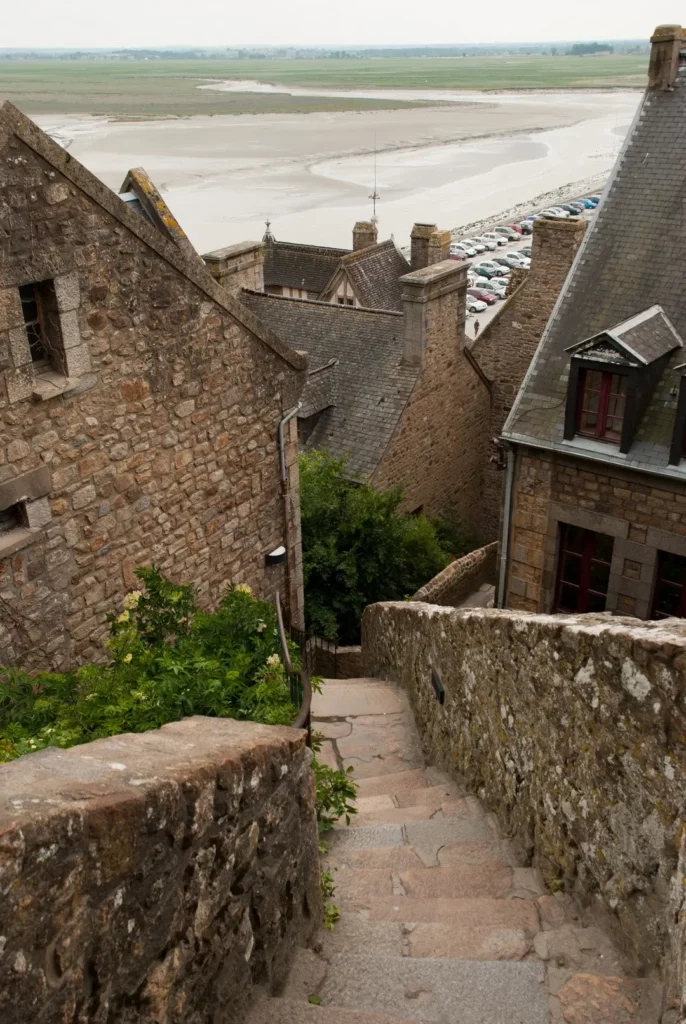
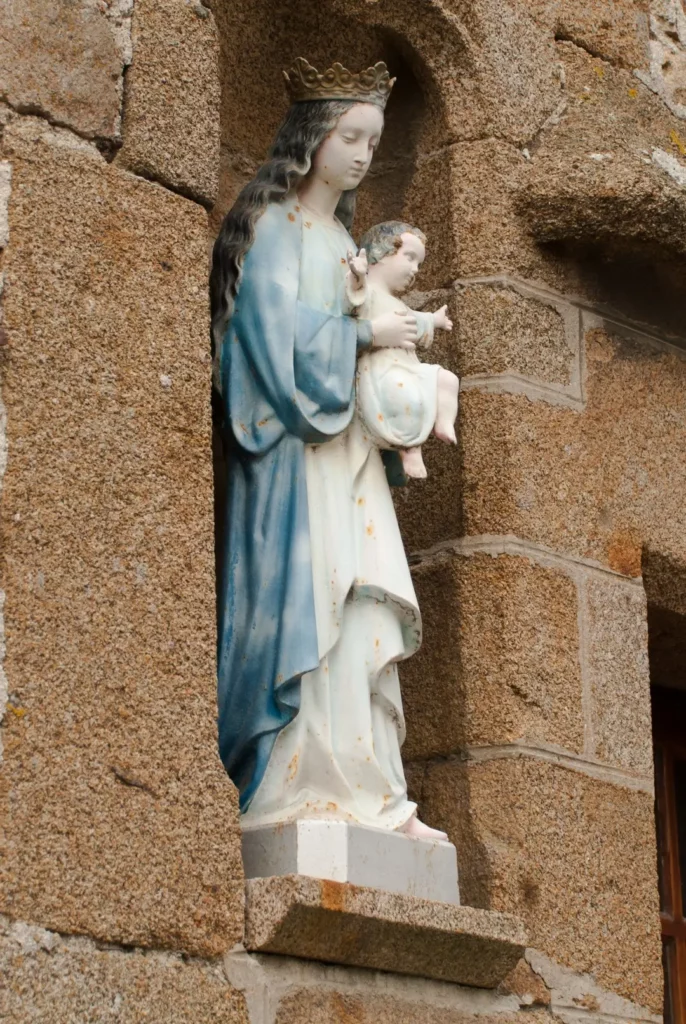
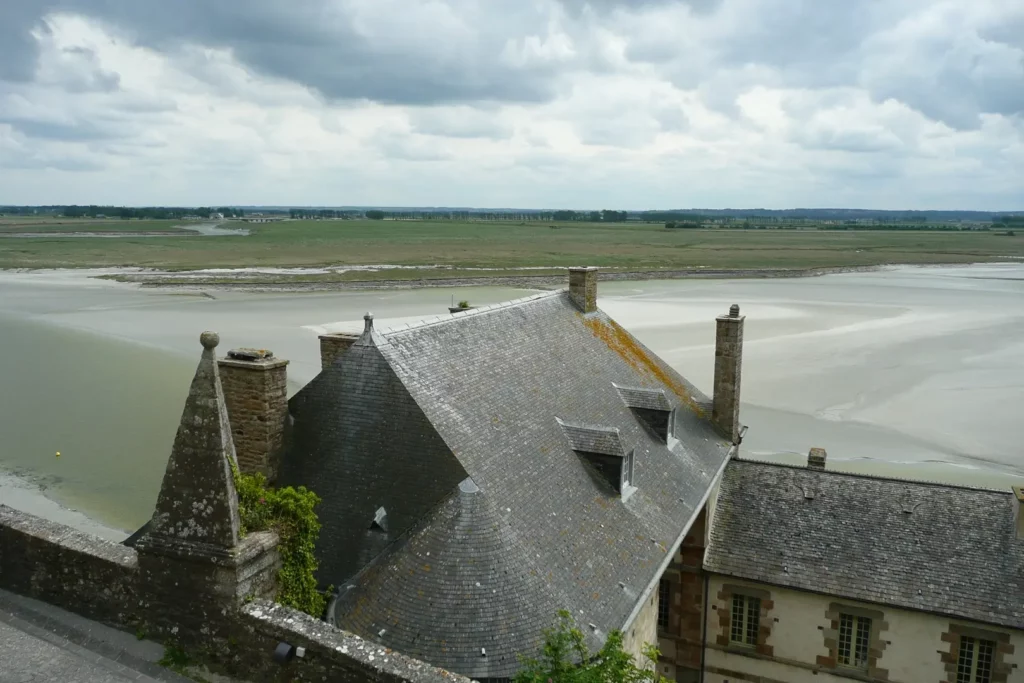
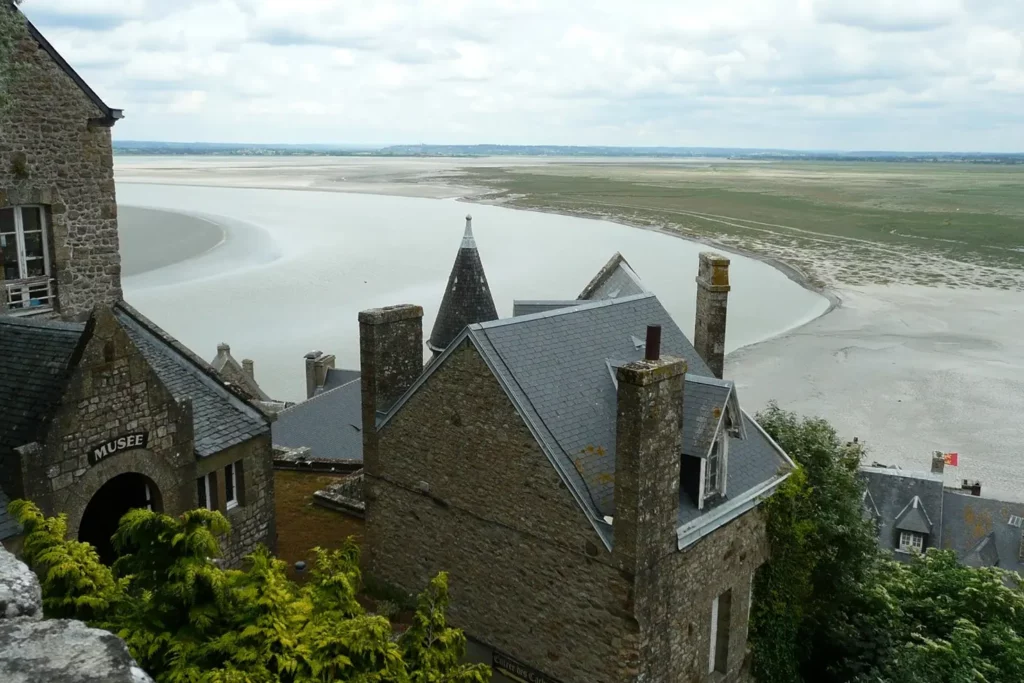
At low tide it is worth going around the mountain. The bay is known for its quicksands and fast tides. Therefore, it is recommended, firstly, to look at the timetable of the ebb and flow, for example, on the website www.lemontsaintmichel.info, and secondly, not to move away from the mountain, even if the sand seems absolutely safe, and the mountain really wants to be photographed from a better angle. The speed of water during spring strong tides reaches 10 km / h, and although this is not a horse gallop, as V. Hugo described the tide, it is still very fast for a pedestrian.
Tourist organizations and private guides offer to walk to SMS on the sand during low tide as part of the excursion. Kayaking trips are offered in case of tide. And regardless of the water – a flight over the bay.
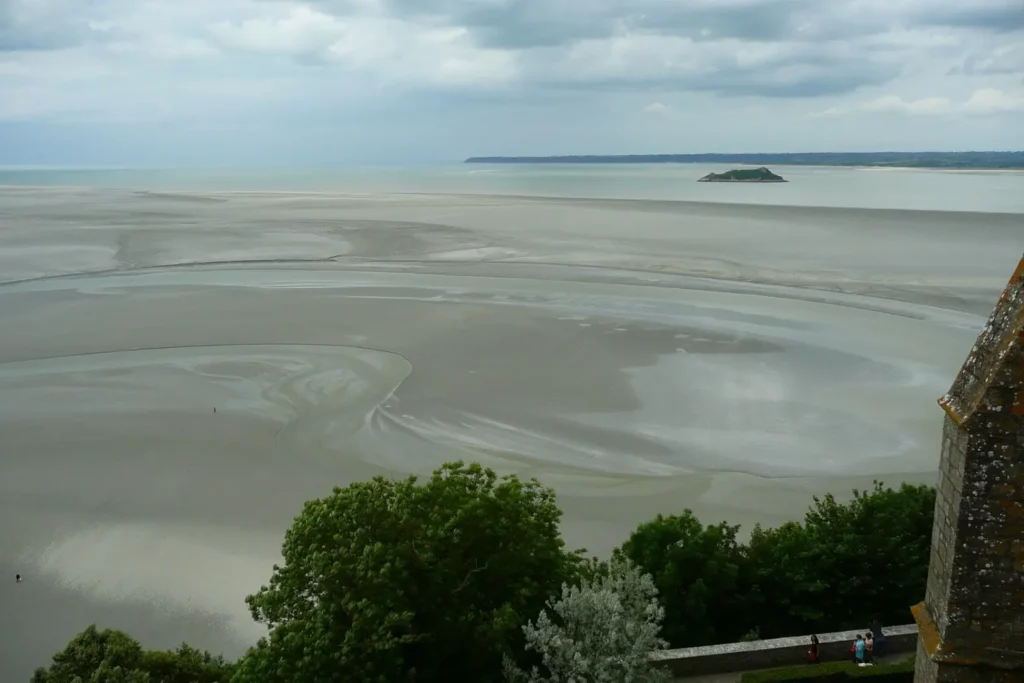
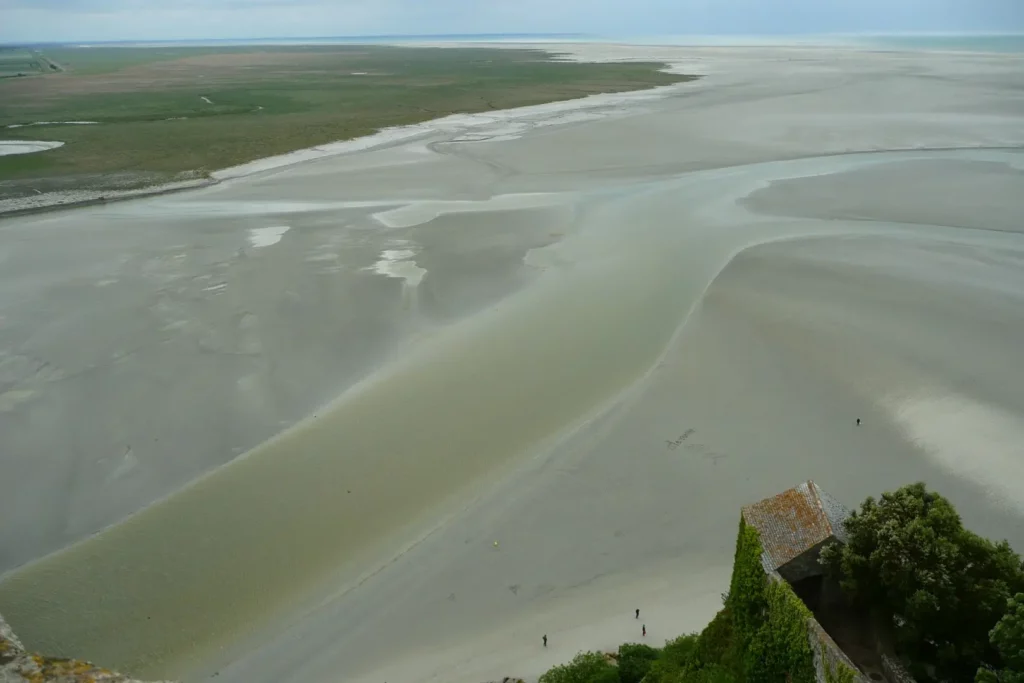

On the other side of the mountain, at its foot, there is a small chapel (15th century) dedicated to St. Ober, who, as desired from the Archangel Michael, ordered to build the first chapel on the mountain.
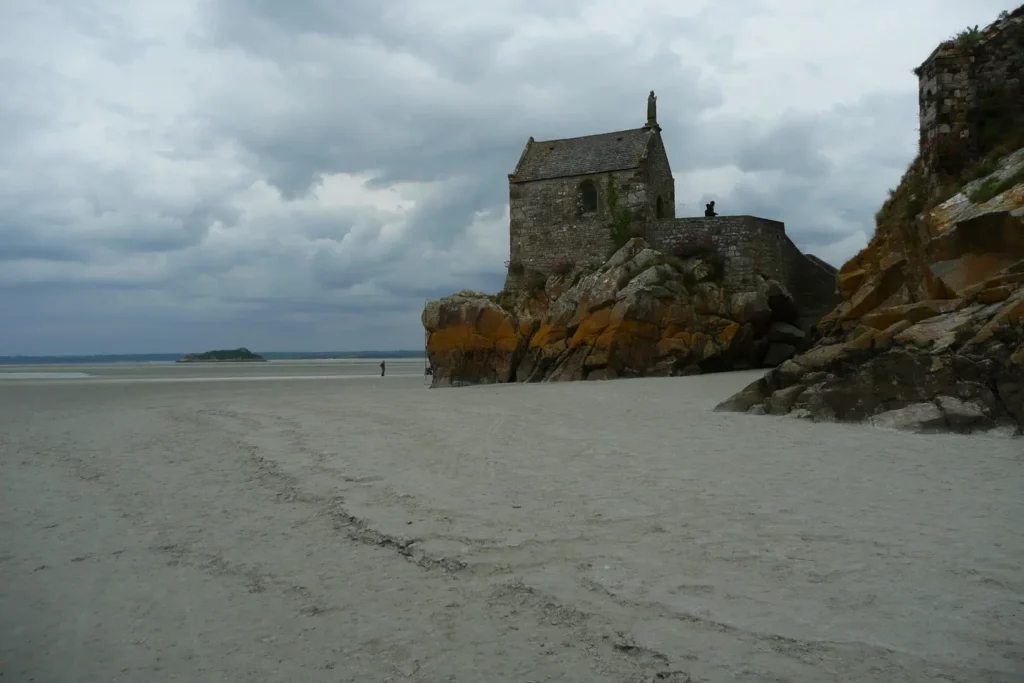
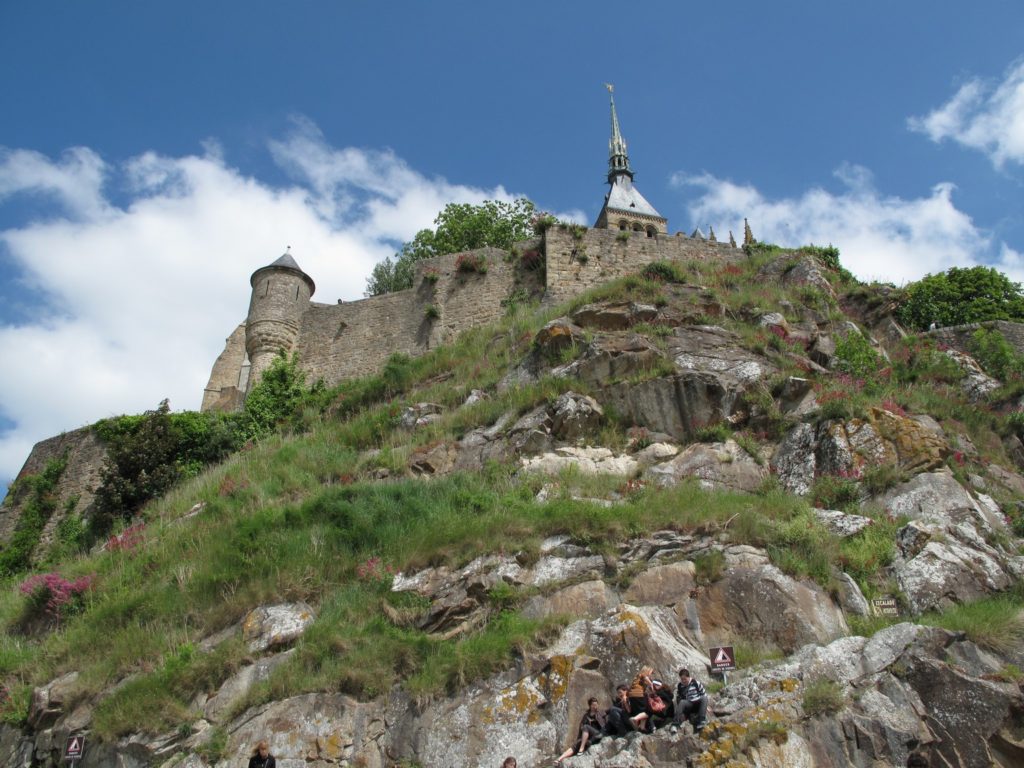
Another church, the parish church of St. Peter (15-16 centuries), is located at the end of the city street before the ascent to the entrance to the monastery.
If you have free time, you have seen everything and even had lunch, you can visit one of the small local museums. A choice is offered:
a history museum with antiques,
an Archeoscope museum telling the history of the MSM,
a maritime museum,
an old house of the 14th century.
Mont Saint Michel Abbey
The buildings of the abbey, the walls and the cliff on which it all stands, make an amazingly holistic impression and are united into a single complex. Once inside, numerous staircases, passages and tourists will also not allow you to understand where you go. Therefore, it is worth stocking up in advance with some plan, at least taking a flyer with a description of the abbey at the entrance, otherwise the monastery will turn into a series of walls and stairs, because there are no interiors (remember – it was a prison for 3 hundrends year).
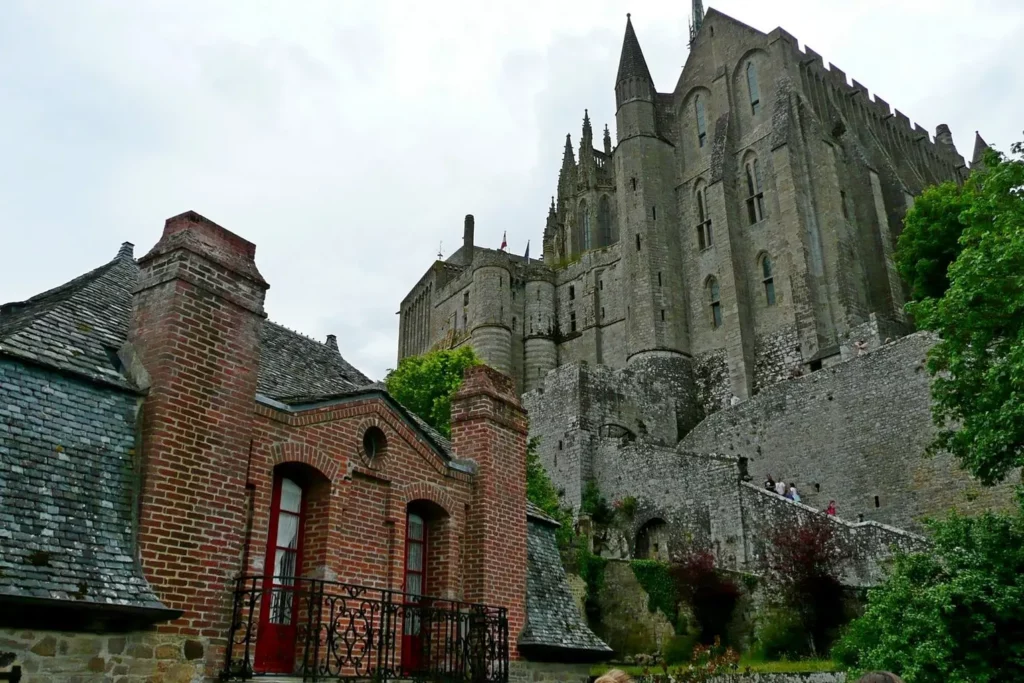

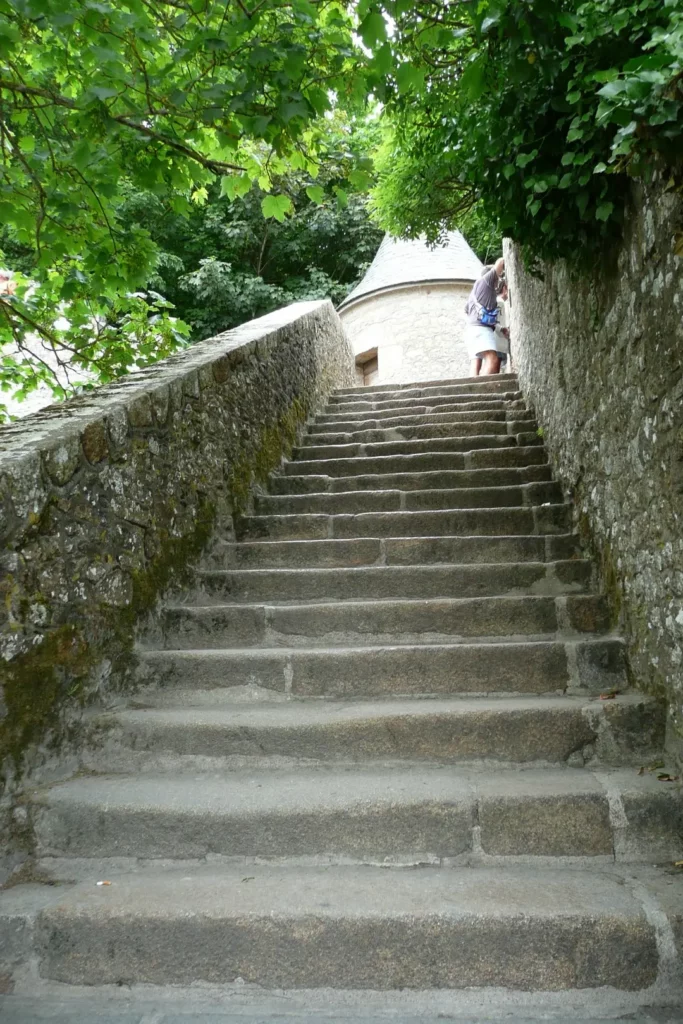
Follow me
Having bought a ticket, the visitor climbs the Great Staircase between the monastery dwellings and the cliff that crowns the church (passages lead from the dwellings to it), and ends up on the West Terrace in front of the church. Thus, we immediately move from the lower level of the monastery to the upper one.
Passage from dwellings.
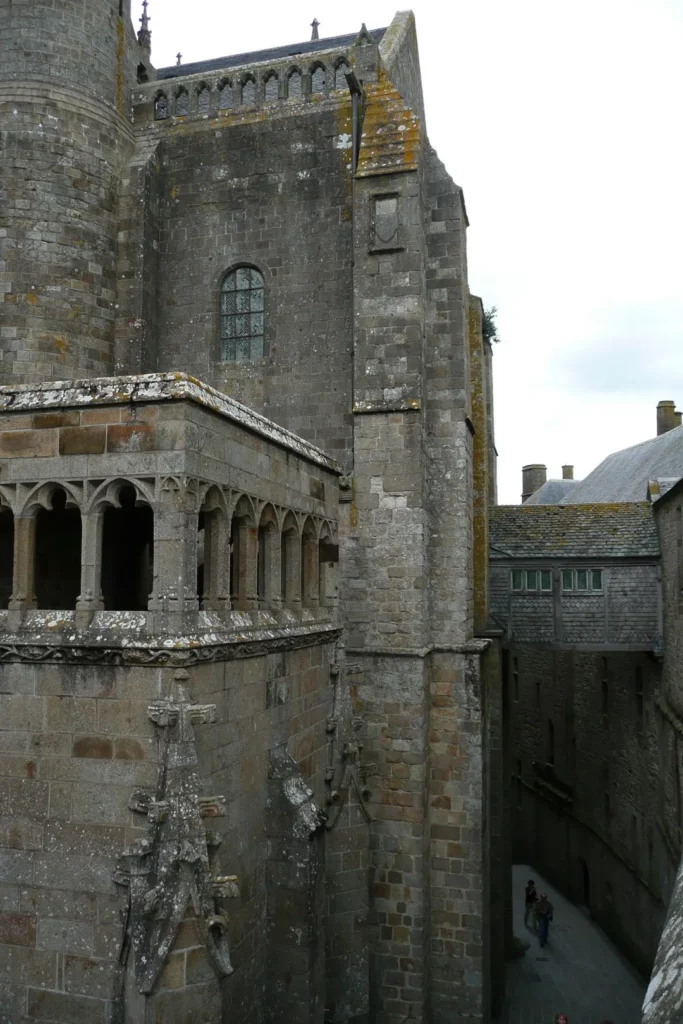
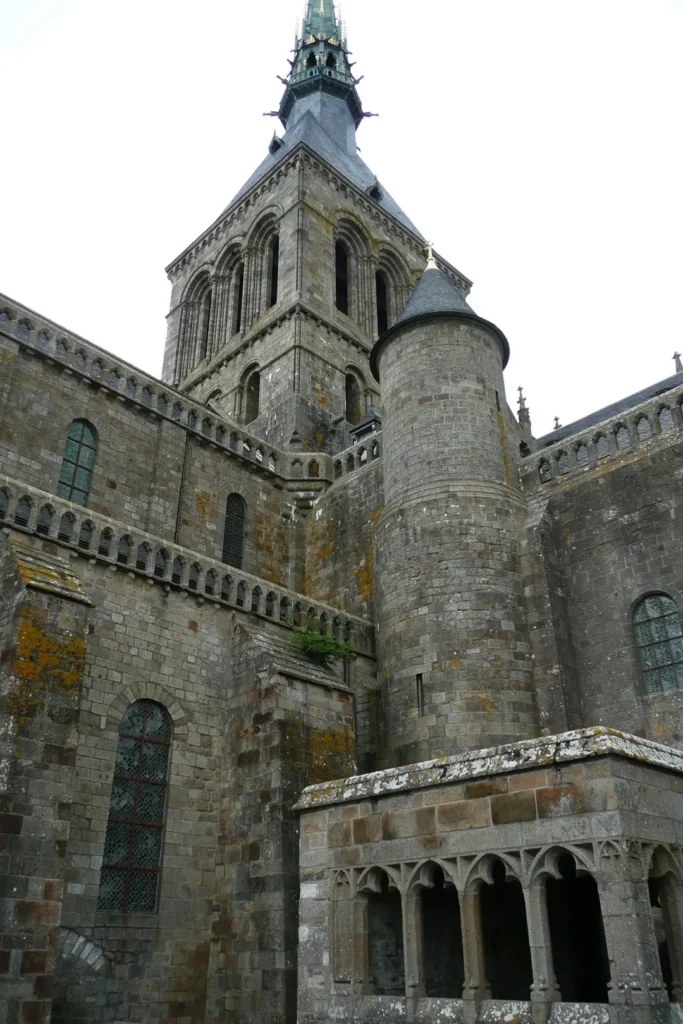
The church went through several stages of construction, since the desired dimensions did not correspond to the real possibilities:
- at the beginning of the 11th century a Romanesque church was built. There was not enough space for construction at the top of the cliff, so part of the church rests on the first church of Notre-Dame-sous-Terre, which became a crypt.
- during and after construction, the church partially collapsed and was greatly shortened, suffered from several fires, and in 1300 the central tower burned down due to a lightning strike. Therefore, the Romanesque building was rebuilt in 1453 in the style of the flaming Gothic.
- in 1776 the nave was shortened by three spans due to the threat of collapse and a new façade in the classicist style was created.
- the last reconstruction was carried out at the end of the 19th century: in the neo-Romanesque style, the bell tower was repaired and a neo-Gothic spire with the figure of the Archangel Michael was created, which serves as a lightning rod.

The interior of the church is extremely simple, there are no decorations, and this simplicity makes a special impression.
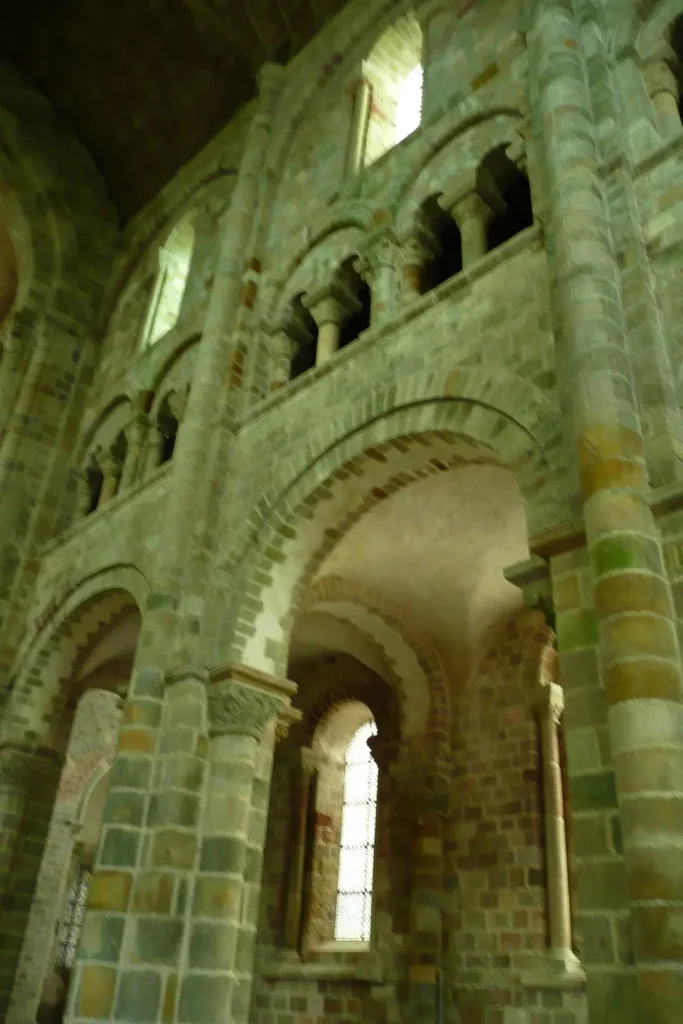

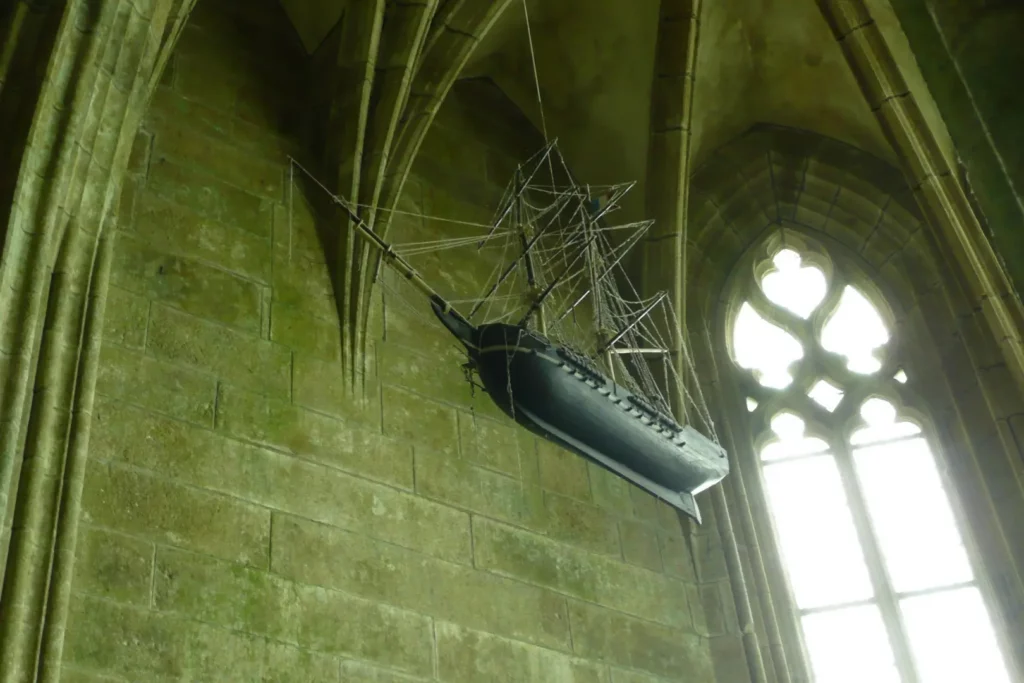
Further we find ourselves in a three-storey building called “Miracle” (early 13th century) – to the left of the church, if you stand facing the facade.
“Miracle” from the terrace in front of the church.

We get straight to the third floor. There is a cloister – an inner monastery courtyard with a gallery. From here is the entrance to the refectory and kitchen.
The three windows in the photo above are the glazed arches of the cloister.
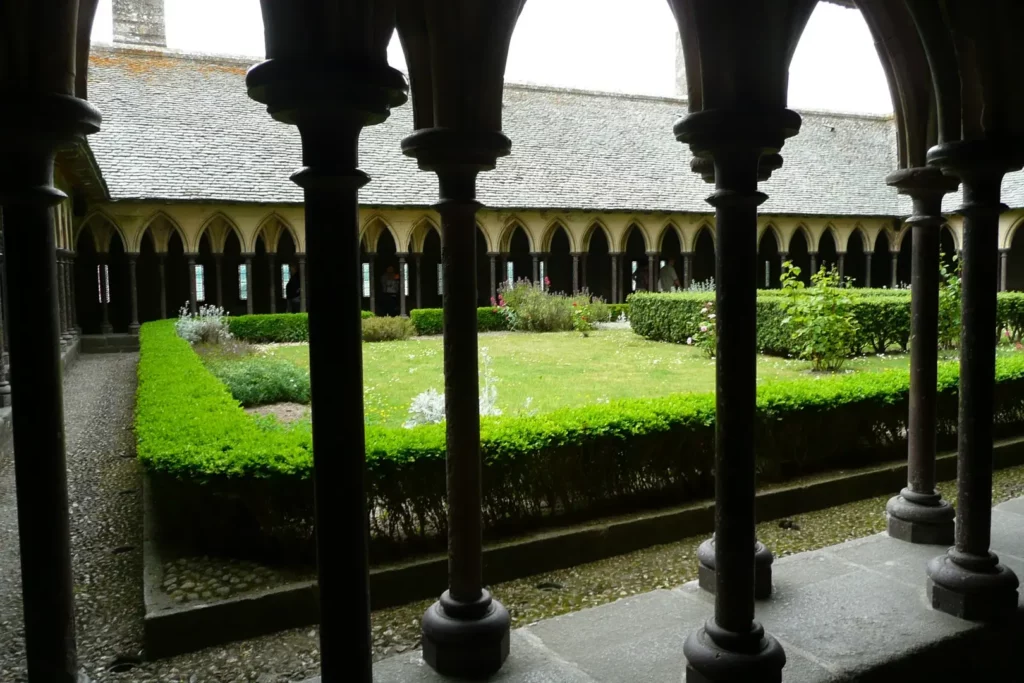
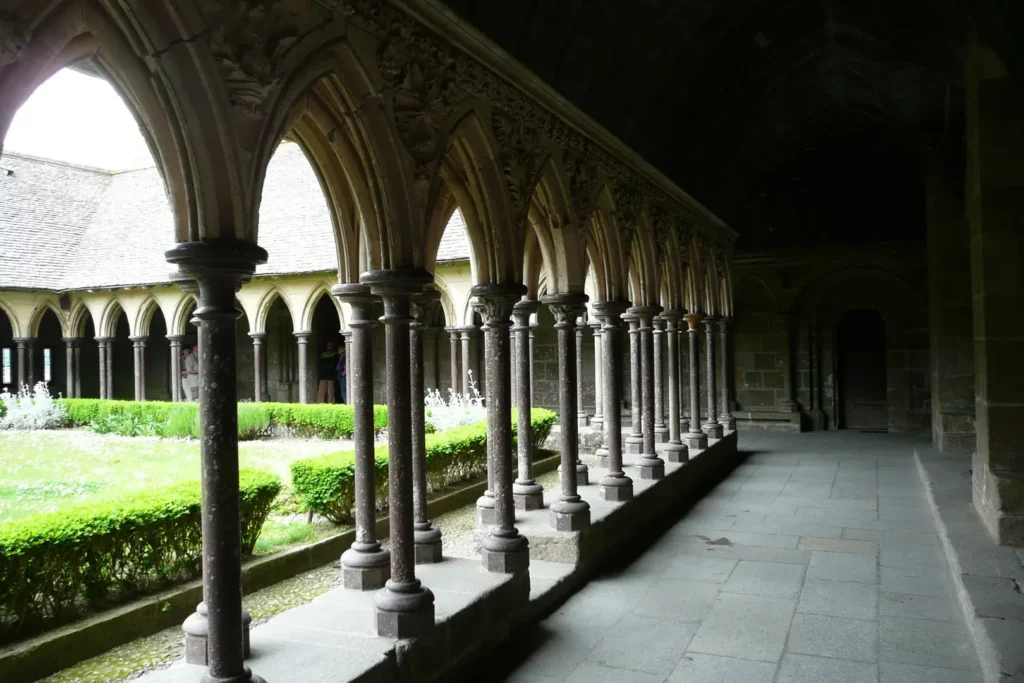
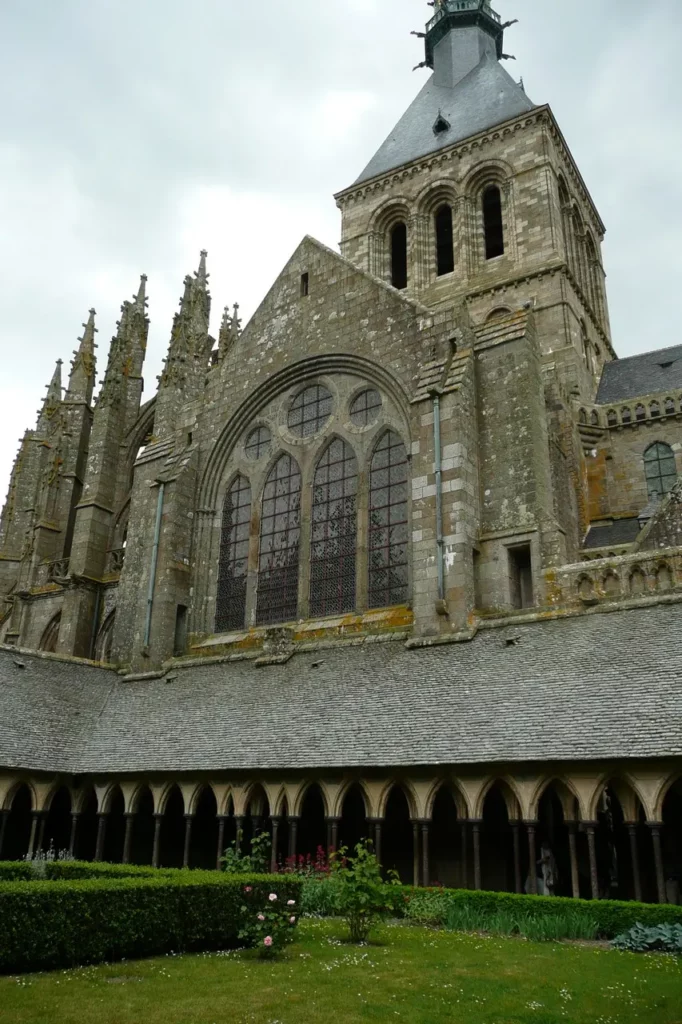
Then halls and staircases follow, and you no longer understand where you are and where you are moving. Having considered the plan, we understand that the main movement is around the cliff and from the upper level to the lower one. Beneath the refectory for monks is a refectory for dignitaries, including kings (Guest Hall). This is still the Miracle complex.

The next halls along the route are crypts under the church, created to hold it, they were also used as chapels. The wheel we get to after the crypts was used to raise food to prisoners in the 19th century. In the Middle Ages, a horse moved inside such wheels.
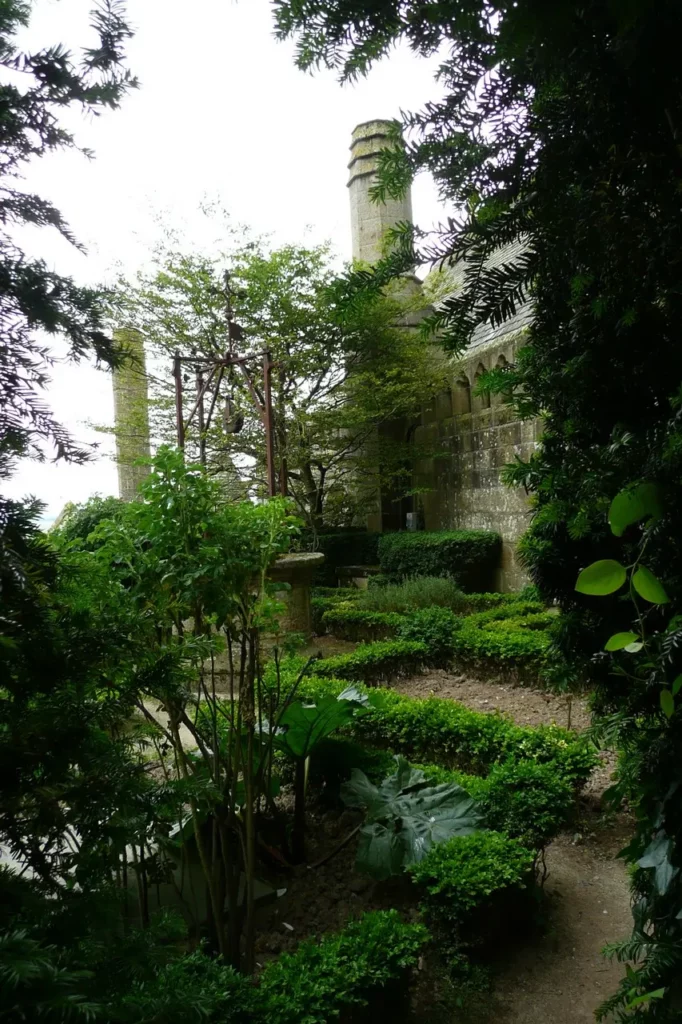
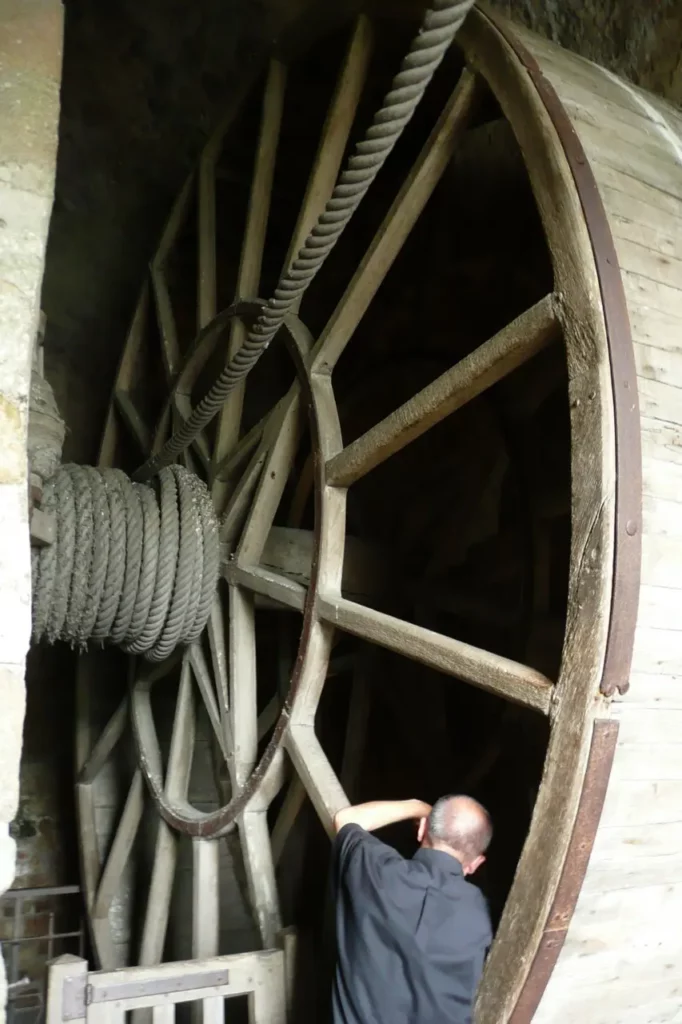
After passing through the passages and the covered gallery for walking, we return to the “Miracle” building – to the Knights’ Hall, which served as a place for monks to work and study. It is located under the cloister and next to the Guest Lounge. Here the monks worked on the manuscripts, which are now kept in Avranches. Even lower is the chaplaincy room and the room where pilgrims were received. Now it houses a museum shop.
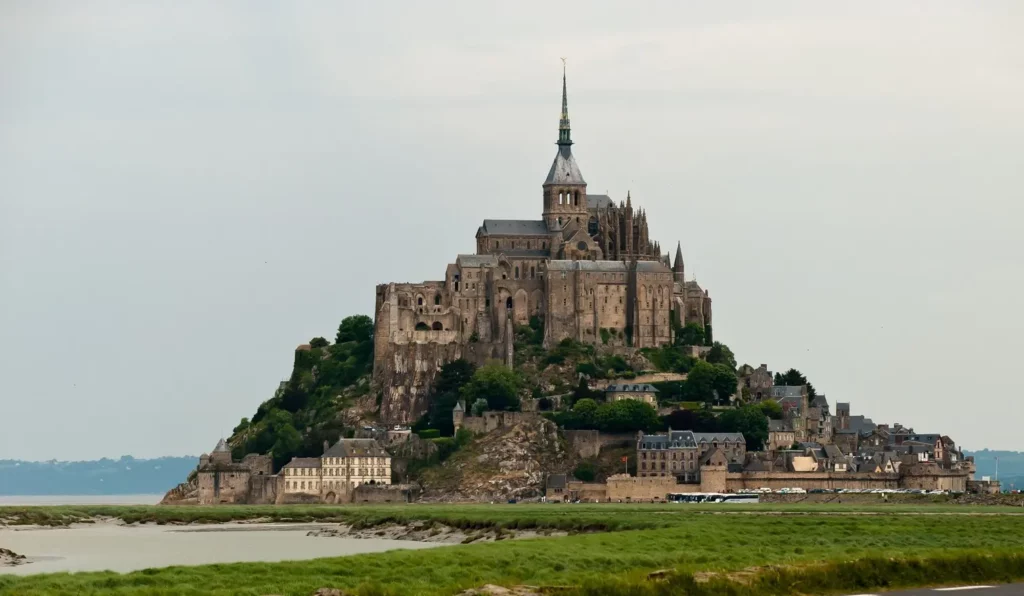
Other Normandy posts – #Normandy.
About Brittany – #Brittany.
Do you enjoy the site without cookies? This means that I work for you at my own expense.
Perhaps you would like to support my work here.
Or change your cookie settings here. I don’t use personalized ads

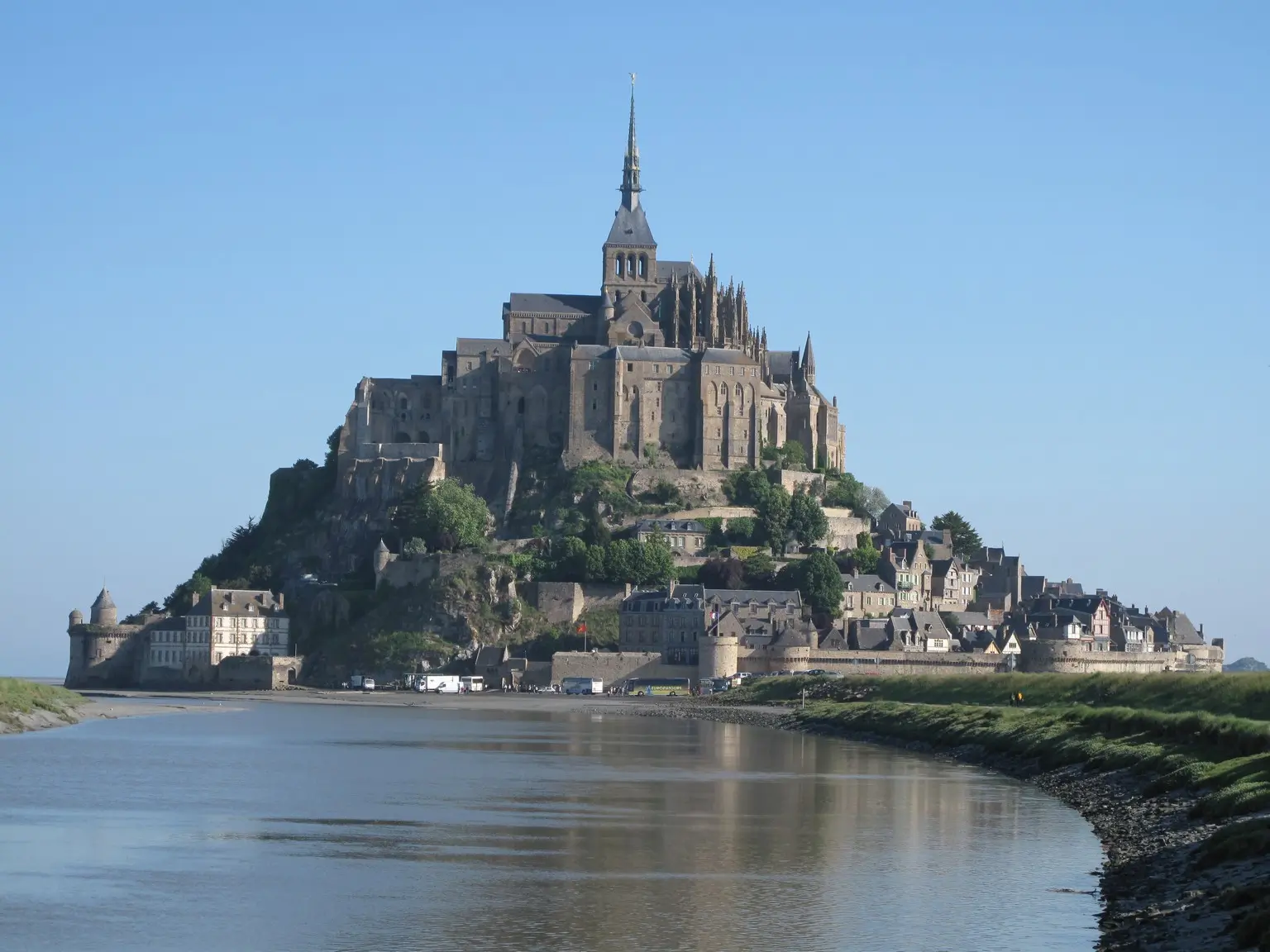
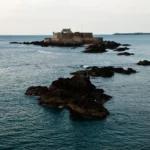
Wow, Mont Saint Michel Abbey looks absolutely stunning, I can’t wait to add it to my bucket list of must-visit places in Europe!